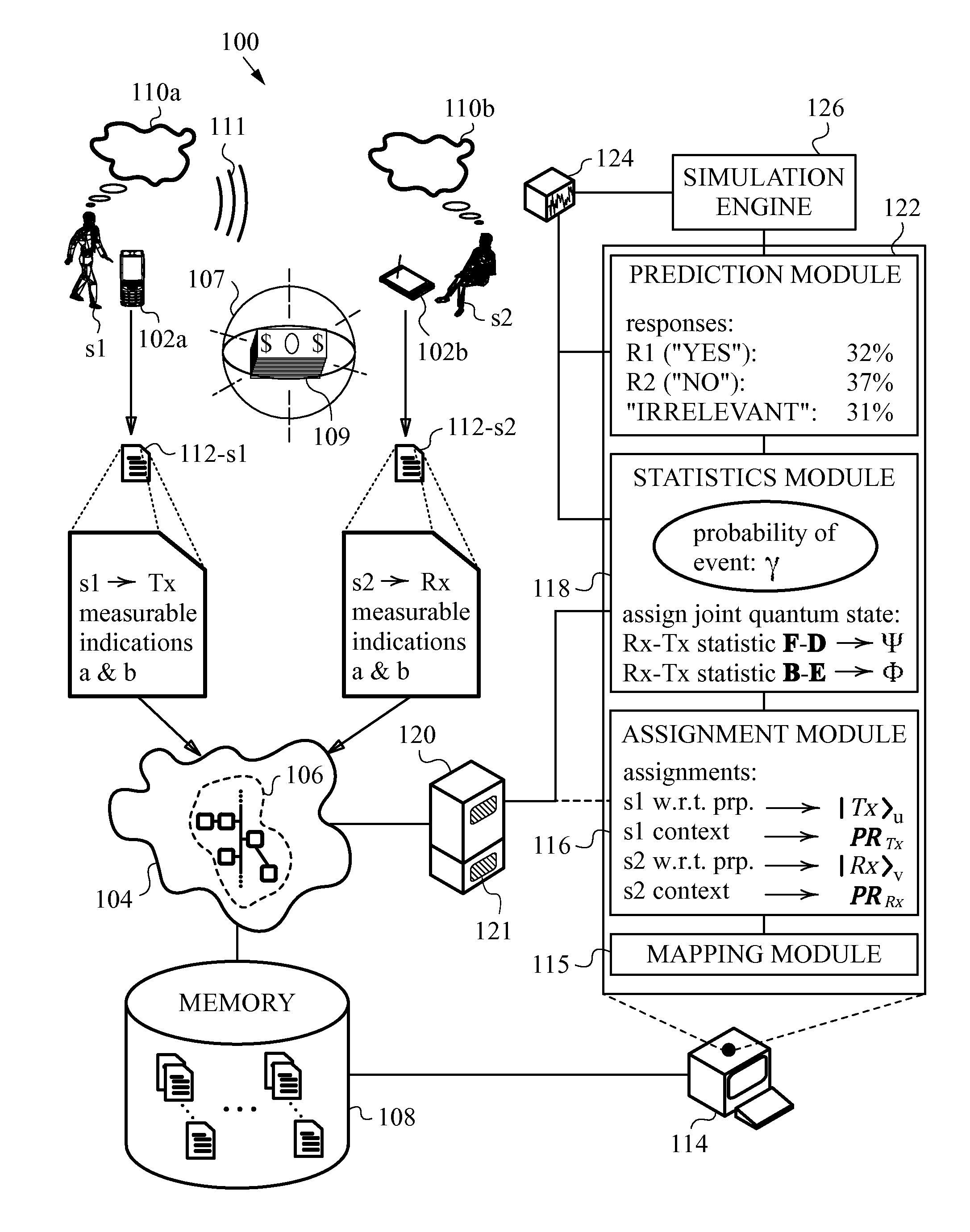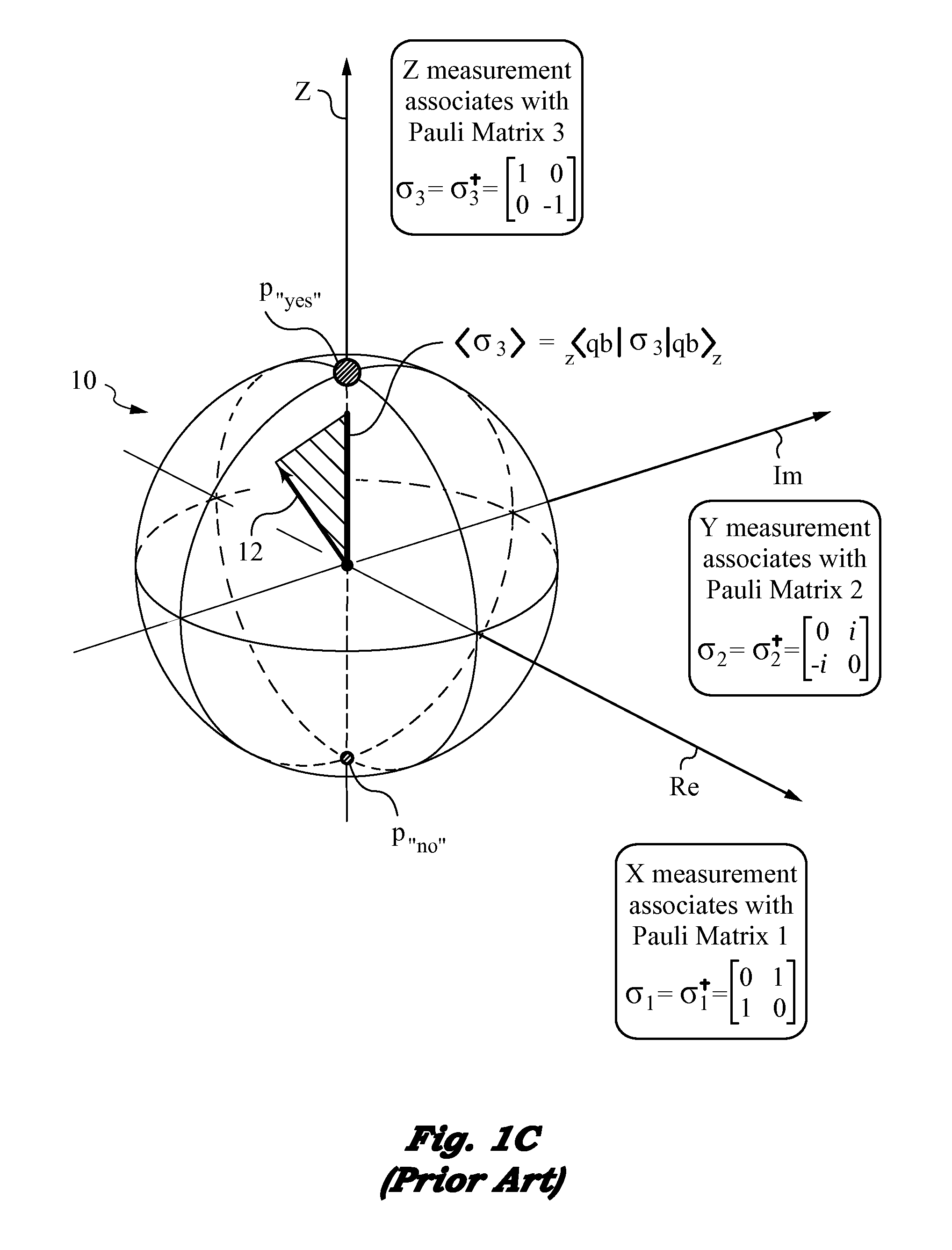Method and Apparatus for Predicting Joint Quantum States of Subjects modulo an Underlying Proposition based on a Quantum Representation
a quantum representation and underlying proposition technology, applied in the field of methods and apparatus for predicting the possible joint quantum states of subjects, can solve the problems of difficult to relinquish strong notions, difficult to accept change involves the inherently statistical aspects of quantum theory, and spent considerable effort in unsuccessful attempts to attribute the statistical nature of quantum mechanics
- Summary
- Abstract
- Description
- Claims
- Application Information
AI Technical Summary
Benefits of technology
Problems solved by technology
Method used
Image
Examples
Embodiment Construction
[0147]The drawing figures and the following description relate to preferred embodiments of the present invention by way of illustration only. It should be noted that from the following discussion, alternative embodiments of the methods and systems disclosed herein will be readily recognized as viable options that may be employed without straying from the principles of the claimed invention. Likewise, the figures depict embodiments of the present invention for purposes of illustration only. One skilled in the art will readily recognize from the following description that alternative embodiments of the methods and systems illustrated herein may be employed without departing from the principles of the invention described herein.
[0148]Prior to describing the embodiments of the apparatus and methods of the present invention it is important to articulate what this invention is not attempting to imply or teach. This invention does not take any ideological positions on the nature of the hum...
PUM
 Login to View More
Login to View More Abstract
Description
Claims
Application Information
 Login to View More
Login to View More - R&D
- Intellectual Property
- Life Sciences
- Materials
- Tech Scout
- Unparalleled Data Quality
- Higher Quality Content
- 60% Fewer Hallucinations
Browse by: Latest US Patents, China's latest patents, Technical Efficacy Thesaurus, Application Domain, Technology Topic, Popular Technical Reports.
© 2025 PatSnap. All rights reserved.Legal|Privacy policy|Modern Slavery Act Transparency Statement|Sitemap|About US| Contact US: help@patsnap.com



